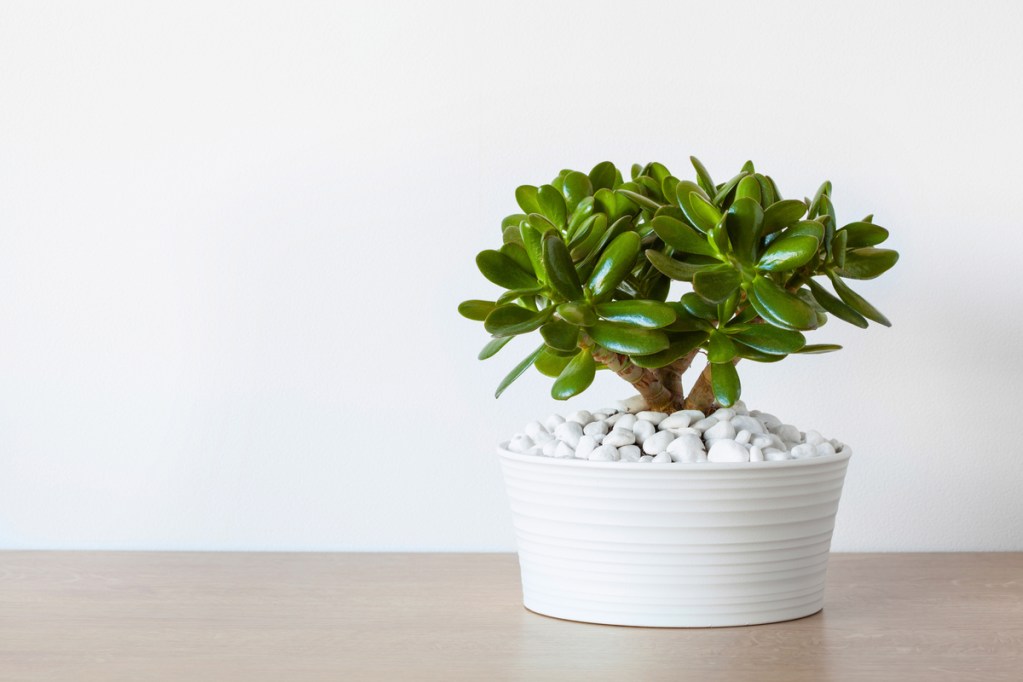
If you love the way trees look but don’t have the space or time to care for them, then why not opt for a jade plant instead? This lovely plant is shaped just like a miniature tree, but in actuality, it’s a succulent. Jade plant care is simple, and these cute plants make marvelous house or office plants.
Under the right conditions, they can even bloom, growing many small white or pale pink flowers. If you want to try growing jade plants in your home, then this is the care guide for you. From planting to propagating, we’ll walk you through all the jade plant care steps you need to know to keep your plant healthy.
Planting your jade
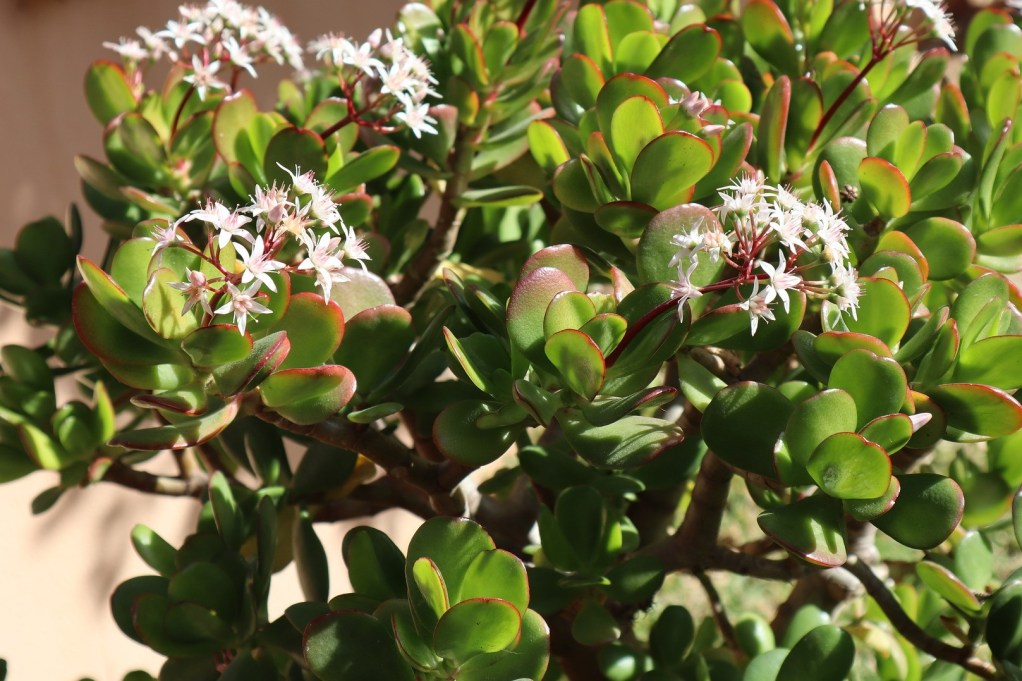
Like most succulents, jade plants typically grow indoors in containers. Choose a well-draining potting soil that isn’t compacted. A succulent or cactus blend is perfect for jade plants, and you can find these blends in most garden supply stores or online. If you want to make your own, stick to a mix that includes sand and perlite for the right texture and water retention.
The container you choose is just as important as the soil. Make sure your container has plenty of drainage holes to avoid water sitting in the bottom of the pot. Some gardeners prefer to place sticks or stones in the bottom of the pot to prevent the drainage holes from becoming clogged. Smaller jade plants will do fine in a container of any material, but larger ones do best in a heavier pot, as it keeps them from tipping over.
Jade plant care
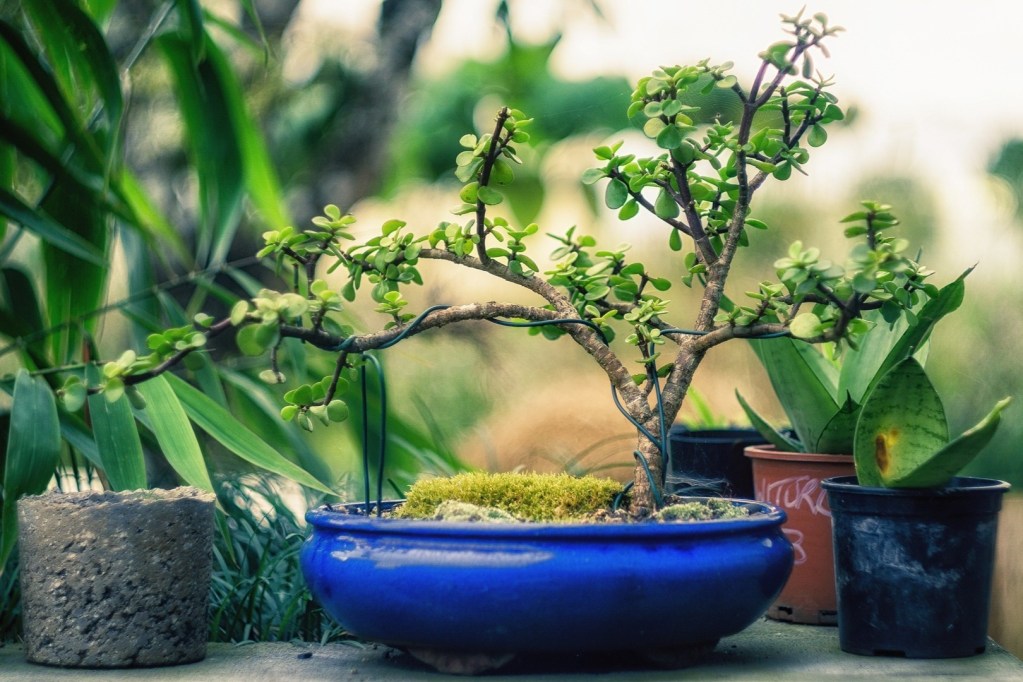
Jade plants are sun-loving succulents, so set them in your sunniest window. They need at least 4 to 6 hours of sun daily on average, which can be tricky to manage during winter. Jade plants will survive on slightly less light or less direct light when necessary, but you may notice a decline in your plant’s overall health. Supplementing with a grow lamp or other light source can help make up the difference during cloudier months.
As with many succulents, be wary of overwatering your jade plant. Only water it when the top few inches of soil is dry to the touch. During winter, your jade plant will use less water and it’s easier to overwater them, which can lead to root rot and other such problems. During winter, mist your jade plant instead of watering it.
Jade plants appreciate being fertilized regularly. You can use any balanced fertilizer, but succulent-specific fertilizers are available as well. Typically, one dose every few months is enough. With proper jade plant care, you might even see it bloom! Don’t get discouraged if it doesn’t, though. You can always take extra steps to encourage it to bloom.
Jade companion plants
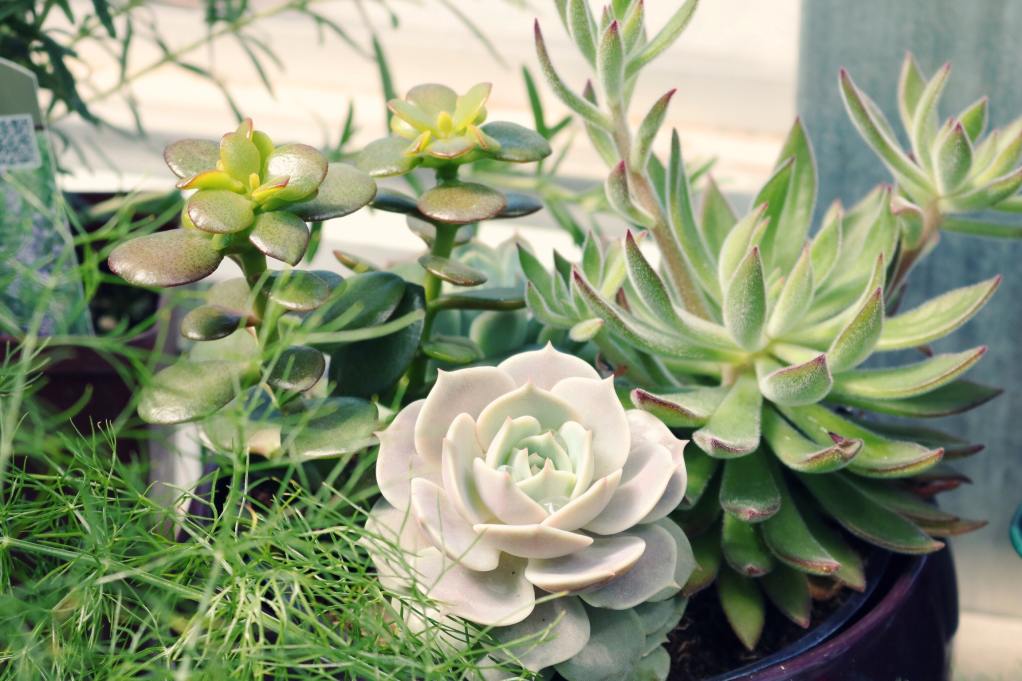
If you’re a fan of indoor succulent gardens that feature multiple plants in one pot, then you’re in luck. Jade plants pair well with many other succulents. Succulents that love lots of sun, don’t need much water, and won’t take up too much room can grow in the same container as jade plants.
A few popular options are sedum, campfire crassula, hen and chicks, echeveria, burro’s tail, and, of course, other jade plants. Avoid plants that enjoy shade and moist soil, such as ferns and orchids. Additionally, avoid plants that could outgrow your jade plant and block the light from reaching it.
Propagating your jade plant
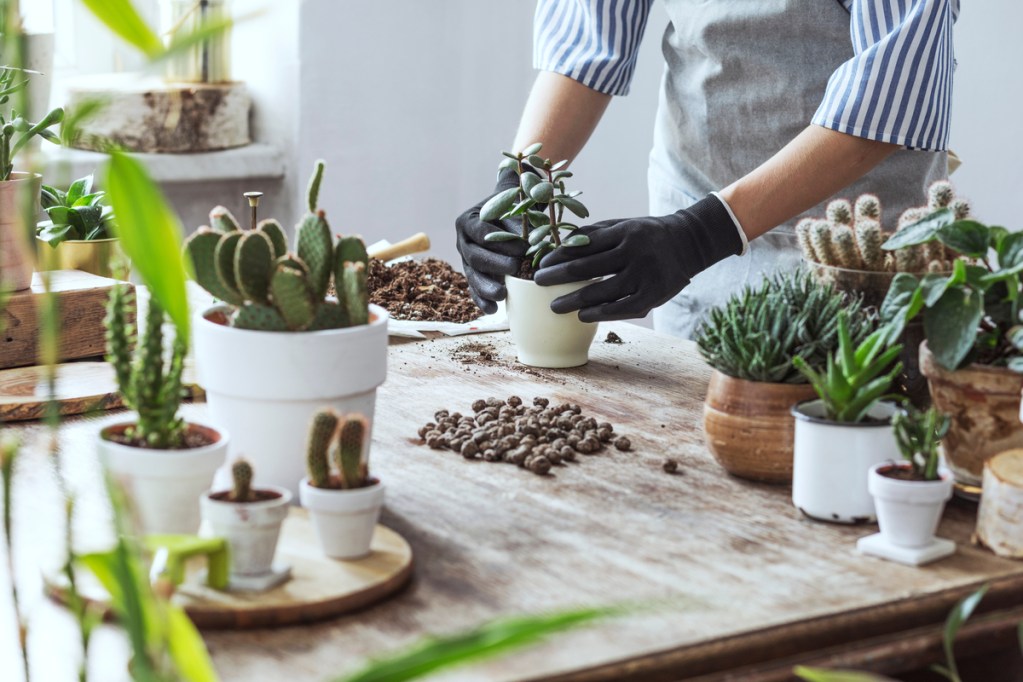
Jade plants are easy to propagate through cuttings, and you can pair propagation with pruning. Pruning isn’t necessary for jade plants, but it can help control your plant’s size by removing excess stems. You can take those stems and root them in soil or water to grow another jade plant. These propagated stems can help fill out your garden, but they also make lovely gifts.
Whether you’re pruning or propagating, make sure your garden shears, scissors, or knife is clean before you start. Cut a stem off the plant. For propagation, make sure the stem is healthy and has a few leaves. Set the stem somewhere dry for a few days, so that the cut can develop a callous.
After this, you can apply some rooting hormone or place the stem directly into either water or soil. Water is often faster but less reliable, while soil is slower but more likely to succeed. Remove any leaves that would be below the water or soil before placing it. Before long, your stem will grow roots. You can also repeat these steps with a leaf or root cutting as well, but stem cuttings tend to be easier and more stable.
Whether you need a succulent that’s perfect for beginners or just want one that’s beautiful, jade plants are a great choice. They’re easy to care for and have an elegant appearance that is sure to please. You can even grow them as a bonsai, if you prefer, and create a miniature garden to delight you and your guests.